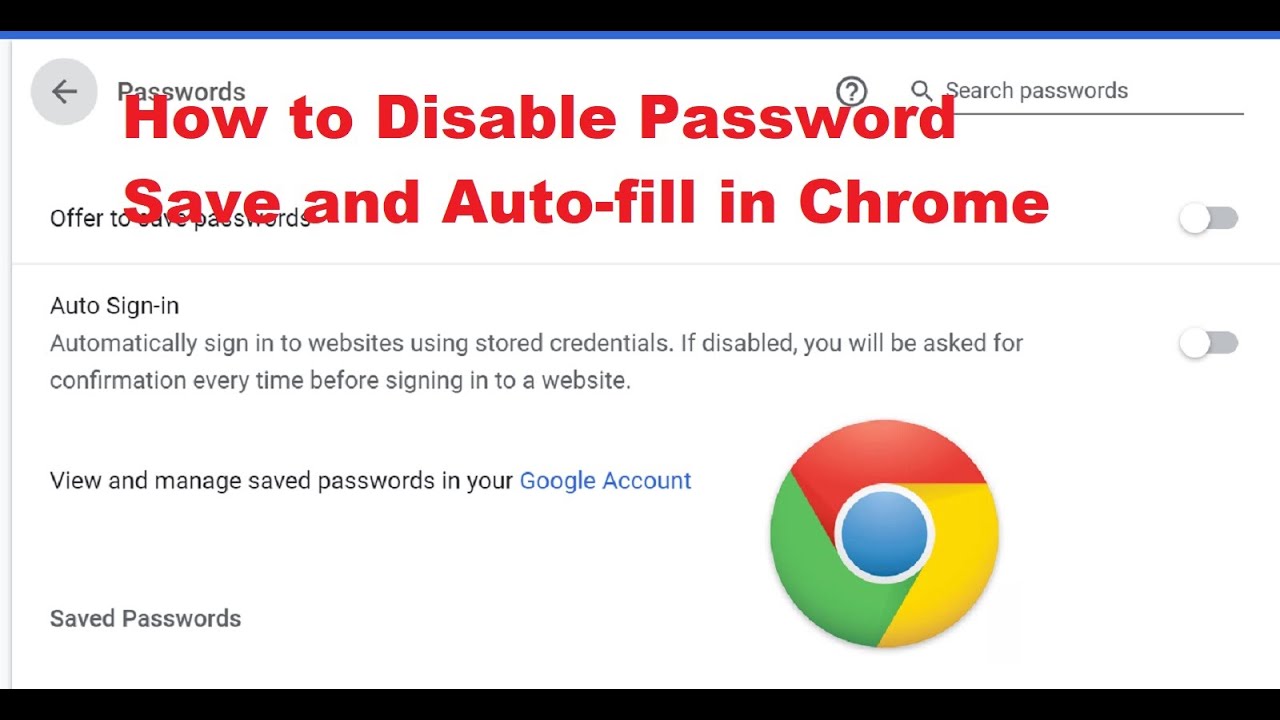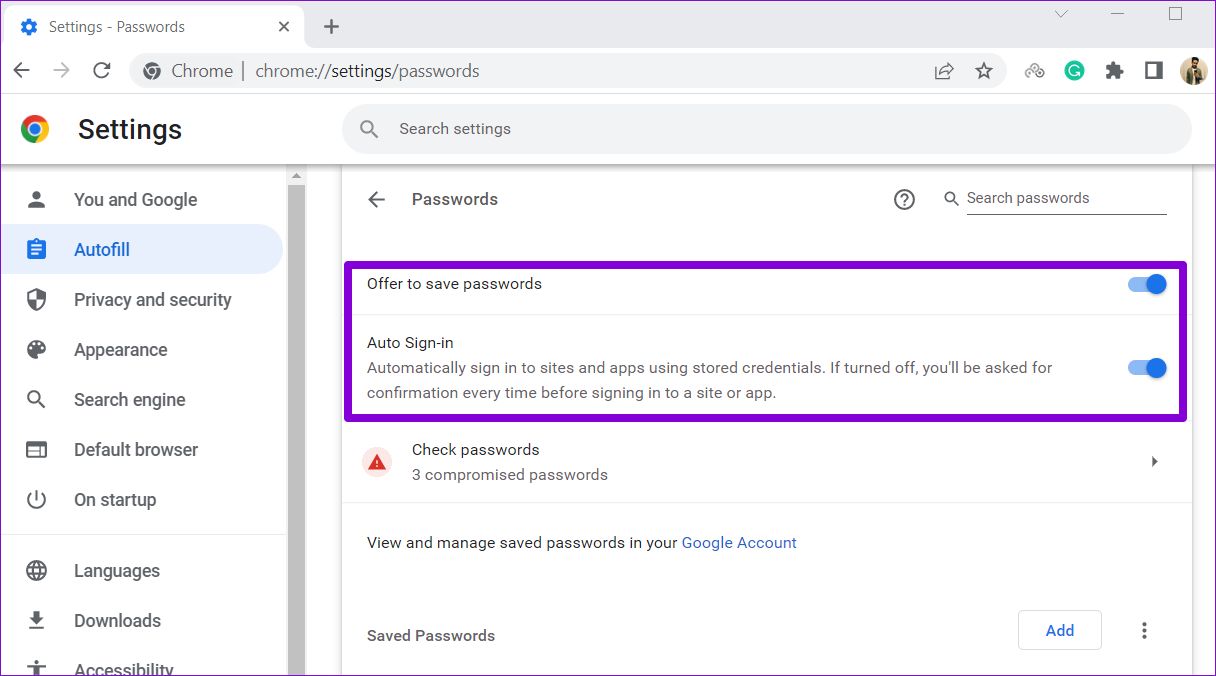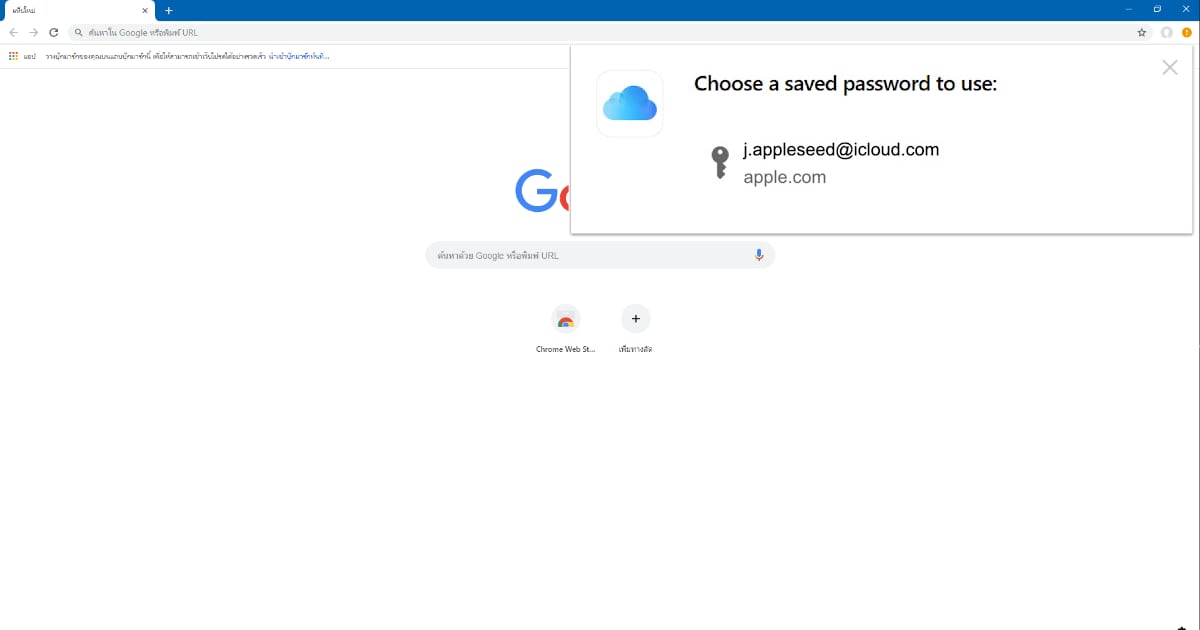Introduction
In today's digital age, web browsers have become an integral part of our daily lives, serving as gateways to the vast realm of the internet. Among the multitude of browsers available, Google Chrome stands out as a popular choice, offering a user-friendly interface and a plethora of features designed to enhance the browsing experience. One such feature is the password autofill functionality, which conveniently saves and fills in passwords for various websites, streamlining the login process for users.
While password autofill can undoubtedly be a time-saving convenience, there are instances where users may prefer to disable this feature. Whether it's due to privacy concerns, security precautions, or simply a personal preference for manual password entry, knowing how to turn off password autofill in Chrome can be invaluable.
In this guide, we will delve into the step-by-step process of disabling the password autofill feature in Google Chrome. By following these simple instructions, users can regain control over their password management and tailor their browsing experience to align with their individual preferences and security practices. So, without further ado, let's explore how to navigate Chrome's settings and disable the password autofill feature.
Step 1: Open Chrome Settings
To begin the process of turning off password autofill in Chrome, the first step is to access the browser's settings. Chrome provides a straightforward method for users to customize their browsing experience, including the ability to manage autofill settings.
-
Launch Google Chrome: Open the Chrome browser on your computer or laptop. You can do this by clicking on the Chrome icon in your desktop or taskbar, or by searching for Chrome in your computer's applications.
-
Access the Menu: Once Chrome is open, look to the top-right corner of the browser window for the three vertical dots, which represent the "Menu" icon. Click on this icon to reveal a dropdown menu of options.
-
Navigate to Settings: Within the dropdown menu, locate and click on the "Settings" option. This will open a new tab in the Chrome browser, displaying various customization and configuration options.
-
Alternatively: Another way to access Chrome's settings is by typing "chrome://settings/" (without quotes) into the address bar and pressing Enter. This direct URL will take you to the Settings page without the need to navigate through the dropdown menu.
By following these steps, users can easily access the settings within Google Chrome, laying the groundwork for the subsequent actions required to disable the password autofill feature. With the settings now accessible, the next phase involves delving into the specific autofill settings to proceed with the customization process.
Step 2: Access Autofill Settings
Upon entering the Chrome settings, users will find a range of customization options to tailor their browsing experience. Among these options is the Autofill section, where users can manage various autofill features, including passwords, payment methods, and addresses. Accessing the Autofill settings is crucial for disabling the password autofill feature in Chrome.
Navigating to the Autofill Section
Once in the Chrome settings, users can easily locate the Autofill section by scrolling down the left-hand sidebar. Alternatively, users can directly access the Autofill settings by clicking on the "Autofill" tab within the settings page. This tab is typically located alongside other options such as "Privacy and security," "Site settings," and "Advanced."
Exploring Password Autofill Settings
Within the Autofill section, users will find a dedicated area for managing password autofill settings. This area allows users to control the autofill functionality for passwords, providing the flexibility to enable or disable this feature according to their preferences. By clicking on the "Passwords" option within the Autofill section, users can delve into the specific settings related to password management.
Verifying User Authentication
In some instances, Chrome may prompt users to authenticate their identity before accessing the password autofill settings. This additional layer of security ensures that only authorized users can make changes to sensitive autofill features, such as passwords. Users may be required to re-enter their computer login credentials or provide other forms of verification to proceed with modifying the password autofill settings.
Summary
Accessing the Autofill settings in Chrome is a pivotal step in the process of disabling the password autofill feature. By navigating to the Autofill section within the Chrome settings, users can gain access to the specific controls and configurations related to password autofill. With this crucial step completed, users are now prepared to proceed with the next phase of turning off the password autofill feature in Chrome.
By following these detailed instructions, users can confidently navigate the Chrome settings and access the Autofill section, setting the stage for the subsequent actions required to disable the password autofill feature.
Step 3: Turn Off Password Autofill
Disabling the password autofill feature in Google Chrome involves a straightforward process within the browser's settings. Once users have accessed the Autofill section and navigated to the specific password autofill settings, they can proceed with turning off this feature to regain control over their password management.
Disabling Password Autofill
-
Locate the Password Autofill Option: Within the Passwords section of the Autofill settings, users will find the option to enable or disable password autofill. This toggle switch allows users to turn off the automatic filling of passwords for websites.
-
Toggle the Password Autofill Setting: To disable the password autofill feature, simply click on the toggle switch associated with this option. When the toggle switch is in the "off" position, Chrome will no longer automatically fill in saved passwords when users visit corresponding websites.
-
Confirmation: Upon toggling off the password autofill setting, Chrome may prompt users to confirm this action. This serves as a precautionary measure to ensure that users intentionally disable this feature. Users can proceed by confirming their decision to turn off password autofill.
Customizing Password Management
Once the password autofill feature has been disabled, users have the freedom to manually enter their passwords when logging into websites. This customization empowers users to take a more hands-on approach to password management, providing an added layer of control and security.
Additional Considerations
It's important to note that by turning off password autofill, users may need to rely on alternative methods for managing their passwords, such as utilizing password managers or memorizing login credentials. While disabling password autofill can enhance security and privacy for some users, it's essential to consider individual preferences and convenience when making this decision.
By following these steps to turn off password autofill in Google Chrome, users can effectively tailor their browsing experience to align with their specific preferences and security practices. With the password autofill feature disabled, users can take a proactive approach to managing their passwords while maintaining control over their online security.
Conclusion
In conclusion, mastering the art of turning off password autofill in Google Chrome empowers users to take control of their browsing experience and security practices. By navigating through the browser's settings, accessing the Autofill section, and disabling the password autofill feature, users can customize their approach to password management and privacy.
Disabling password autofill in Chrome is not merely a technical adjustment; it represents a conscious decision to prioritize security and take an active role in safeguarding sensitive information. This proactive stance aligns with the evolving landscape of online security, where individuals are increasingly vigilant about protecting their digital identities and personal data.
Furthermore, by turning off password autofill, users can explore alternative methods for managing their passwords, such as leveraging reputable password managers or adopting personalized strategies for securely storing and recalling login credentials. This shift towards manual password entry fosters a heightened awareness of online security and encourages users to adopt best practices for safeguarding their accounts.
It's important to recognize that while disabling password autofill can enhance security and privacy, it may also necessitate a degree of adaptability in how users approach their online interactions. Whether it involves memorizing passwords, utilizing secure password management tools, or implementing multifactor authentication, the decision to disable password autofill prompts users to explore a spectrum of security measures tailored to their individual needs.
Ultimately, the ability to turn off password autofill in Chrome underscores the significance of user autonomy and empowerment within the digital realm. By understanding and exercising control over browser features, users can actively shape their online experiences, reinforcing their digital resilience and fortifying their defenses against potential security threats.
In essence, the process of disabling password autofill in Google Chrome transcends a mere technical adjustment; it symbolizes a proactive stance towards security, privacy, and user empowerment. As users navigate the ever-evolving landscape of online interactions, the ability to customize and fortify their browsing experience becomes an essential tool in safeguarding their digital well-being.

























